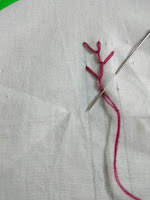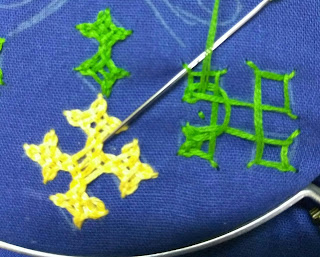What are you looking for?
Wednesday, 29 November 2017
Front slit kurti
Tuesday, 19 September 2017
Sling bag using mat weaving technique
Hi friends, I had seen a video of mat weaving technique to stitch floor mats or table coasters.
So I thought I could try this technique in a sling bag.
1. I took synthetic cloth and made small strips of length as required for the width of the bag. I took two alternate colours and placed them at right angles to each other.
2. As in mat weaving we need to move one colour cloth up and down the other colour.
3. Then I stitched this basic mat by hand to hold the pattern together.
4. Place it on another cloth of same dimension and stitch the four sides.
5. Now remove the handmade stitches.
6. Place this pattern on the cloth of the sling bag and fix it in all sides.
7. To cover the raw edges use the same cloth as in the mat design as piping.
8. Now attach the zip.
9. Stitch the sides.
10. Attach the handle of the bag.
Wednesday, 30 August 2017
Feather stitch - - four lines variation
Tuesday, 29 August 2017
Feather stitch
Monday, 28 August 2017
Double herringbone stitch
First a row of herringbone stitch is done.





















































